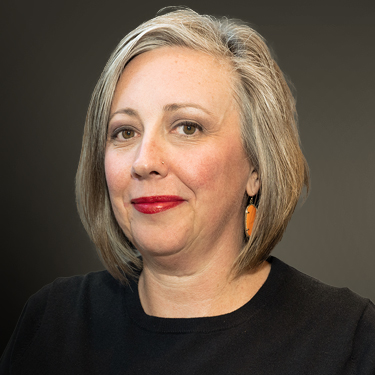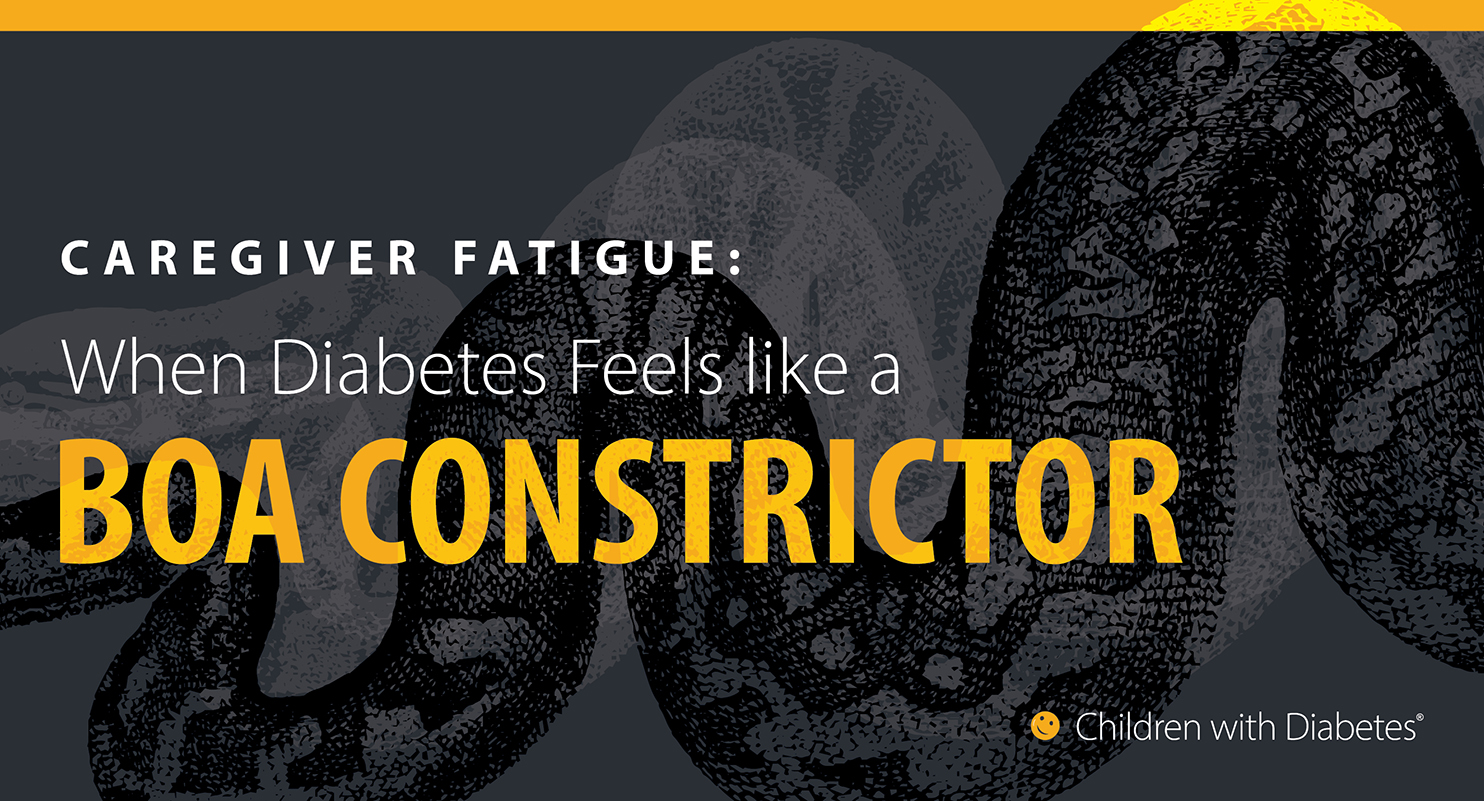As the month of May comes to a close, I find myself reflective upon the fact that May is Mental Health Awareness Month. Yet, in the diabetes world, we don’t talk much about mental health, do we? Most of our diabetes chit-chat is about pumps or syringes and different types of insulin. We babble on about watching blood glucose levels with meters or continuous glucose monitors. We gossip about juice boxes and glucose tabs and diabetes gadgets. We post and celebrate about FDA approvals for new diabetes technology. But, rarely do we post on social media about how diabetes can make us feel like we have reached the end of our rope and wonder whether we might need to seek professional help. Why? Why does it feel ok to reach out to strangers on the internet for help and advice about the best way to treat a low blood sugar during your daughter’s softball game but not ok to reach out when you think that your child’s diabetes might be making you depressed?
It’s time to stop keeping these feelings secret. We shouldn’t be afraid to talk about it. It’s ok to admit that sometimes, you’re not ok.
For the longest time, I wasn’t even sure what this feeling was called. I knew that it was related to diabetes and the enormity of it all. The feeling would strike when I would least expect it…when restocking my diabetes supply closet or maybe when I was folding laundry. Sometimes, there were tears that came from seemingly nowhere. Sometimes, I would pretend that I was going to take a shower and then just go cry in my bathroom. Sometimes, I went to my closet to “put up the laundry” and would just sit in the floor and stare off into space. Sometimes, I just stood over my sleeping toddler and cried as I looked at all of the diabetes paraphernalia that littered her little bedside table and trashcan. Diabetes was an uninvited part of our lives and it felt like it was swallowing me. I wasn’t sure what to do but I knew that if I didn’t do something that I would be of no use to anyone…especially not that tiny person in the bed with diabetes that needed me the most.
The “weird feeling days” didn’t happen every day. But they came often enough. Days became weeks…weeks became months…and then months became years. The tears felt the same. I was functioning but functioning with an underlying stress and sadness that I kept hidden from so many. It wasn’t going away because the diabetes wasn’t going away. Diabetes was strong. The juiceboxes. The site changes. The prescriptions. The calls to the school nurse. The sleepless nights. The worry. Diabetes may have taken over my daughter’s pancreas but it felt like it had wrapped itself around my body like a boa constrictor and it wasn’t ever going to let up.
I needed to be stronger than the diabetes. I had to find a way out. For me…for my daughter…for all of us.
I reached out to my primary care physician and set up an appointment for an office visit. Although it wasn’t time for my annual physical, I knew that needed to see her so that I could explain my symptoms. I was having physical symptoms of exhaustion from the lack of sleep and was also feeling very mentally down and blue. I was spending most of my waking hours in a constant state of diabetes think…if I wasn’t worrying about diabetes then I was still thinking about what was coming next with the diabetes…carb counting…finger poking…insulin calculations…rinse…repeat…over and over again…. for what seemed like forever. What was wrong with me? And, most importantly, could she fix me? After ordering some lab work to rule out some unlikely medical issues, she knew almost instantly what was “wrong” with me and calmly explained that I had caregiver fatigue. That was what was wrong with me. There was a name for it and we were going to come up with a plan to help me deal with it.
Caregiver fatigue is a state of physical, emotional, or mental exhaustion that can occur when you are so busy caring for others that you neglect your own emotional and physical health. You may withdraw from friends and family members. You may have changes in appetite and sleep patterns and may find that you are becoming sick more often. You may be more irritable and may have trouble making decisions and have memory problems due to lack of sleep. This fatigue can lead to increased anxiety and depression.
Let’s face it, none of us signed up for diabetes. When given this diagnosis, you likely didn’t have a roadmap planned out to address your physical and mental health needs that go along with this new diagnosis. We spend so much time just dealing with the day-to-day churn of diabetes that the tears and the frustration seem like a normal part of the diabetes package. I think a lot about what happens at diagnosis and how you are given a crash course on carb counting and insulin dosing and ordering supplies and then pushed out the door to your new life with diabetes. There’s not a lot of conversation about the emotional impact of this diagnosis on the person with diabetes and how the diagnosis will change the whole family unit. No one talked with me about caregiver fatigue and no one warned me about the emotional toll of diabetes. No one told me that I wouldn’t be able to do it all.
Diabetes Caregiver Fatigue Treatment Plans
My doctor and I came up with several options to address my caregiver fatigue situation. Some of the options seemed reasonable, some of them seemed far-fetched, and some of them seemed like they would never work in a million years.
Support Group/Therapy
First, she felt like I needed to find a support group to share my feelings with when I was feeling overwhelmed. She recommended attending therapy sessions or group therapy sessions with other caregivers who might be experiencing similar situations. SOLD! That one was very easy to accomplish with my connections to my MoFFLs (Moms of Friends for Life) in our Children with Diabetes community. I just needed to take more affirmative steps by reaching out to my other diabetes moms when I was feeling overwhelmed and send a text message or request a facetime when I felt like I needed to go into the bathroom or closet and cry. Cry with a friend. Check! I could do that one easily.
Medication
Another option was to begin a low dose of an antidepressant medication for a short period of time to help treat symptoms of depression. This option seemed doable as part of the treatment plan. I was glad to know that medication was available if we decided to go this route and glad to know that it could be used for a short-term period to help get things regulated. Check with your own provider for advice on medication management for caregiver fatigue and the use of antidepressants as part of a treatment plan.
The next options moved into a more far-reaching category, for me, in the wellness and well-being realms. Note, I am a diabetes control freak and I am convinced that no one can “diabetes like me.” When the doctor suggested these recommendations to me, they would have caused me to have to give up some level of diabetes control and that made me feel uncomfortable. I immediately discounted them as “not possible” in our appointment but we talked through them and made some compromises.
Sleep/Better Sleep
The doctor suggested that I needed to get more sleep. She also noted that when I was sleeping that my sleep was disturbed by diabetes alarms and that my sleep needed to be of better quality. She suggested that I needed to share overnight diabetes tasks with my husband. The lack of sleep was a key part of my personal caregiver fatigue. I was exhausted from staying up all night long watching a continuous glucose monitor and worrying about the “what ifs.” The doctor stated that if we couldn’t find a way for me to get some more sleep and rest then none of the rest of the treatment plan would work. She was right. I needed sleep. Through a combination of talking to other diabetes families who had “been there, done that” and creating a plan with my husband to answer middle of the night alarms, I gradually learned how to look less at the CGM monitor each night and slowly started sleeping a little more at night. 11 years into our diagnosis, I can’t say that I have mastered this task. I still feel like I sleep with one eye open but I no longer watch the screen all night long and lay awake worrying about the “what ifs.”
Division of Labor
Finally, the doctor suggested that I needed to stop trying to do it all. Stop trying to be all of the things to all of the people. Give something up. Remember what they say on the airplane during the pre-flight announcements, “put on your own oxygen mask first before helping others.” She asked me to make a list of all of the things that I was doing related to the diabetes. We wrote it out in the office together. And, then, she asked me to look at the list and see what on the list could be reassigned to other people in my life? How could others help take on some of those tasks so that it wouldn’t all fall directly on me? Could someone else help call in the orders for the medical supplies or pick up the prescriptions from the pharmacy? Could someone else help restock the diabetes closet in the hallway once the supplies are delivered to the house? Is there a trusted babysitter that could come over and watch the kids so that I could have a night out for dinner without having to think about diabetes for a few hours? Do I have a team in place to help support me and help lessen the burden of diabetes so that I am not trying to do it all alone? The answer was no. I was trying so hard to take it all away from my daughter that I took it all away and placed it all on me. So, I started thinking of ways to help divide the diabetes labor into more managing chunks so that they didn’t all fall directly into my area of responsibility. Did I succeed? Not entirely. We’ve had amazing babysitters over the years that can have far better results with diabetes than I can sometimes have, if I’m being honest. So, check for the occasional night out with friends! But, ordering and organizing supplies…and picking up those prescriptions. That’s a solid no. I’m still doing it all. However, as my child has grown up, so has her ability to manage her own diabetes. She now manages much of her own diabetes with almost complete independence. That reduces my burden greatly and now I find that much of my role has changed to the environmental services garbage collector of the house picking up diabetes trash after site changes or CGM changes. Is there still a burden? Yes. Is it better? Absolutely.
The Boa Constrictor and Hope
I remember one time feeling particularly upset about seeing picture perfect images of my friends on social media. They seemed to have it all together and I was being squeezed alive by my diabetes boa constrictor. My mom reminded me that people only post what they want you to see on social media. She was correct. And, I was one of those people too. I was posting the diabetes trips and the softball games and the “fun” side of diabetes. I wasn’t posting the closet pictures and the bathroom pictures and the tears. I wasn’t talking about the fatigue or the sadness or the worry that was consuming me on a daily basis. People like people who are happy. But diabetes brings along all of the emotions and we should talk about those, too. Not just in May during Mental Health Awareness Month but all the time. It’s ok to not be ok. If your diabetes is starting to feel like a boa constrictor, reach out for help. Whether you reach out to trusted friends or your health care provider, you can start with little steps to help begin to reclaim your own health and wellness.
If you need a Friend for Life, I’m just an email away…[email protected]. Hang in there. You are doing a great job!
Green and Orange Forever,
Leigh
Written by Leigh Fickling, JD, MEd, MS



